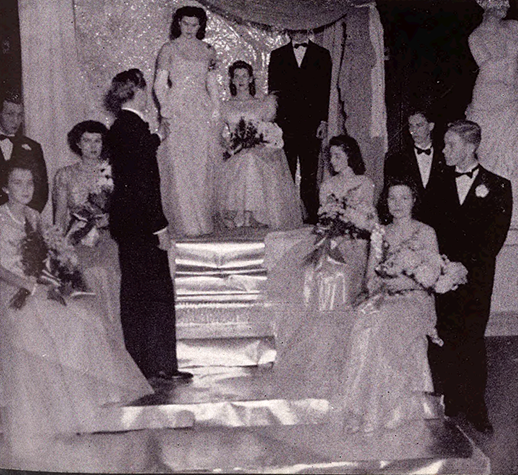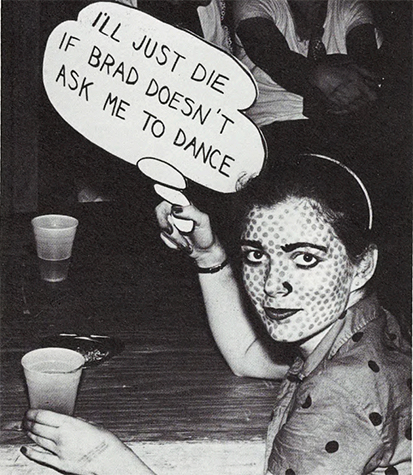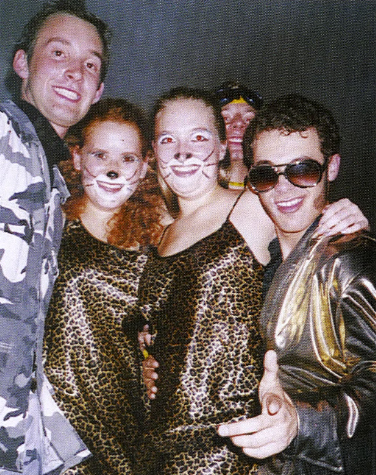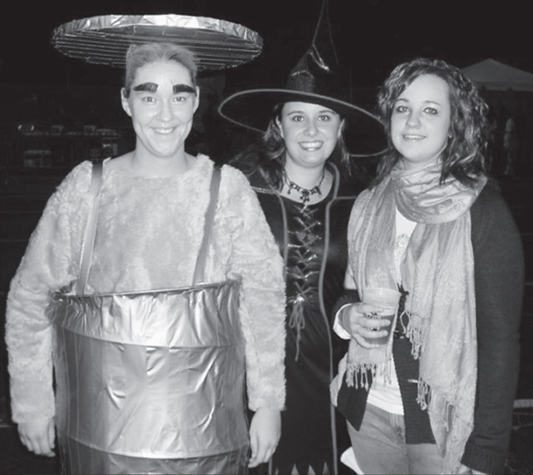By Matt Hampton | Oct. 26, 2023
Do you remember Bauhaus? From the 1980s until 2013, this architecture student tradition was famous as one of the liveliest Halloween parties on campus.
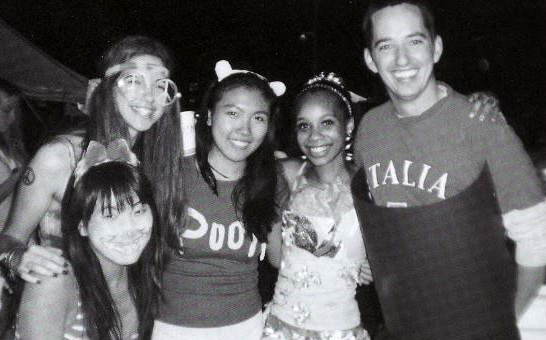
In costumes that ranged from male nuns to Oscar the Grouch, thousands of students from across Washington University flocked to Givens Hall and danced until the early hours of the morning.
WashU architecture students named the Bauhaus Ball in homage to the influential German art school that was active from 1919 to 1933. Home to architects such as Walter Gropius and Ludwig Mies van der Rohe, the Bauhaus school promoted functionalism and the use of innovative materials and geometric forms. Despite their minimalistic approach to design, Bauhaus students and faculty often put on parties where they wore elaborate and avant-garde costumes.
The name of WashU’s Bauhaus Ball referenced these costume parties as well as the university’s connection to the German design school via Joseph Passonneau, who studied under Gropius before he served as WashU’s architecture dean from 1957-66.
As it is such a popular event, there was invariably little room to move once the party got underway.
Hatchet yearbook, 1991
During early Bauhaus Balls in the ’80s and ’90s, partygoers dressed in full black and white, and some years, the ball’s theme related to German modernism, such as 1989’s “Machine in Industry” and 2002’s “Metropolis” — a reference to the 1927 film by Fritz Lang.
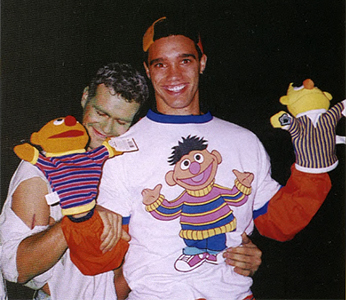
But over time, the bash became a free-for-all for students to have a good time, dressed in anything from a homemade St. Louis Arch costume to classic devil, bunny, or cowboy outfits.
In preparation for the ball, students in the College of Architecture in the Sam Fox School of Design & Visual Arts — often sophomores — constructed elaborate decorations and blasted loud music.
“As it is such a popular event, there was invariably little room to move once the party got underway,” reported the 1991 Hatchet yearbook. “Students wishing to dance had to resort to dancing on the stairs and in darkened hallways.”
Originally taking place in Givens Hall, Bauhaus grew so large in the 1990s that it moved to a tent in a parking lot outside the building. The Student Life newspaper reported that the crowd numbered 4,000 students in 2002, and in 2009 the tent measured 120 by 160 feet.
The evolution of the Bauhaus Ball
The Bauhaus Ball appears to have originated from the Beaux Arts Ball, an older Sam Fox School costume party. Put on by the Art School Association, the Beaux Arts Ball began around 1931. At first, it was a more structured costume ball during which judges voted to crown the Beaux Arts queen and maids. Each year, students wore unusual costumes with a different theme relating to art history.
“Everyone was bused to a location off campus, and in my second year, the location for the ball was Meramec Caverns,” Eugene Markowski, BFA ’60, recalled in a 2016 Washington magazine article. “The costume theme was a well-known painting or sculpture or a period in the history of art. Once we arrived at the caverns, the food and drinks began, with live music for dancing. Later, the parade of costumes began with a judging for the best costume.”
Beaux Arts Ball themes ranged from surrealism to colonial art, and other off-campus locations included the Old Courthouse (1931) and the Hotel DeSoto roof garden downtown (1940, 1942). In the early years, the Beaux Arts Ball was hosted in the spring, and it helped raise money for scholarships. In these decades, festivities included floor shows that featured tap dancing and acrobats.
By the 1980s, it had become a Halloween dance with off-the-wall costumes much like Bauhaus. According to the yearbook, the last Beaux Arts Ball at WashU took place in October 1984. The following year, Bauhaus began.
Details are sparse about early incarnations of Bauhaus, and it was a few years before it settled into its standard vibe of a wacky Halloween party at Givens Hall. For example, the 1986 ball occurred on April 5 at St. Louis City Hall. Student Life advertised the event as a “black-tie affair” sponsored by the American Institute of Architects and WashU School of Architecture with an admission price of $10.
At first, Bauhaus was exclusive to architecture students, but it grew to welcome students from all schools. Eventually, tickets became free, but the Architecture School Council (ASC), which organized Bauhaus, sold T-shirts to raise money for the Alberti Program, a summer day camp that introduces children in the St. Louis community to architecture and design.
The end of the Bauhaus Ball
For almost 30 years, Bauhaus was a prominent WashU tradition, touted both in Student Life and first-year orientation as one of the top campus parties.
“Trekking across campus while shivering and dressed in Halloween costumes is a formative freshman bonding experience,” wrote the Student Life editorial board in 2014.
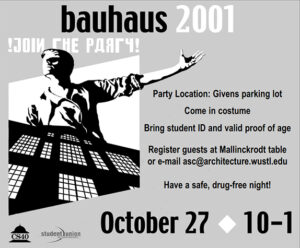
But that year, the tradition met an abrupt end. Student Union, the undergraduate student government, cut off the ASC’s Bauhaus funding, arguing that the event cost too much money ($26,270 the prior year) in part due to fencing, security, and other costs associated with holding the function outdoors.
In the preceding years, Bauhaus had also drawn smaller crowds due to a scheduling conflict with Parents’ Weekend.
In 2014, the ASC replaced Bauhaus with Sam Fox Fest, a weeklong event series to raise money for the Alberti Program. Events included a lecture, a movie night, and a dance party at the Atomic Cowboy, a now-closed venue on Manchester Avenue in the city, with only 150 tickets available.
Although Sam Fox Fest was much smaller than its predecessor, it required less than half the funds and focused more closely on philanthropy. Organizers hoped multiple events would also give students more opportunity to the connect with the architecture school.
“Architecture students and art students are kind of isolated from the rest of campus a lot, and people don’t really believe we exist sometimes,” Rachel Weiss, BArch ’17, told Student Life. “I think it will be nice if we kind of get the word out a little more, do a full week of events and talking about it rather than just a big one-night fundraiser.”
After that, Bauhaus faded into history, existing only in the memories of alumni who experienced the late-night Halloween phenomenon.

